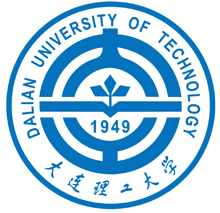Title: Towards Human-Computer Conversation Systems: Applications and Challenges
Lecturer: Rui Yan, Peking University
Short Bio:  Dr. Rui Yan is a Researcher in Peking University, an Adjunct Professor in Central China Normal University and Central University of Finance and Economics, and was a Senior Researcher at Baidu Inc. He has investigated several open-domain conversational systems and dialog systems in vertical domains. Till now he has published more than 50 highly competitive peer-reviewed papers. He serves as a (senior) program committee member of several first tier venues (such as KDD, SIGIR, ACL, WWW, AAAI, CIKM, EMNLP).
Dr. Rui Yan is a Researcher in Peking University, an Adjunct Professor in Central China Normal University and Central University of Finance and Economics, and was a Senior Researcher at Baidu Inc. He has investigated several open-domain conversational systems and dialog systems in vertical domains. Till now he has published more than 50 highly competitive peer-reviewed papers. He serves as a (senior) program committee member of several first tier venues (such as KDD, SIGIR, ACL, WWW, AAAI, CIKM, EMNLP).
Abstract: Nowadays, automatic human-computer conversation systems have attracted great attention from both industry and academia. Intelligent products such as XiaoIce (by Microsoft) and Duer (by Baidu) have been released, while tons of Artificial Intelligence companies have been established, we see the technology behind the conversational systems is accumulating and now open to the public gradually. With the investigation of researchers, conversational systems are more than scientific fictions: they become real. I would review the development of human-computer conversation systems, especially the revolutionary changes brought by deep learning techniques. I would start from current applications and the bottlenecks of them. Then I would look forward to future challenges in the next generation systems. In the meanwhile, I would share the work by our group.
Title: Building Informational Bot (InfoBot) with Question Answering & Generation
Lecturer: Nan Duan, Microsoft Research Asia
Short Bio:  Dr. Nan Duan is a Lead Researcher in Natural Language Computing group at Microsoft Research Asia. He is working on fundamental NLP tasks, including question answering & generation, semantic parsing, dialogue system, paraphrasing, and etc. Many of his research have already transferred to important Microsoft AI products, such as Bing, Xiaoice, and Cortana. From 2015, he is the organizer of NLPCC Open Domain QA Shared Task.
Dr. Nan Duan is a Lead Researcher in Natural Language Computing group at Microsoft Research Asia. He is working on fundamental NLP tasks, including question answering & generation, semantic parsing, dialogue system, paraphrasing, and etc. Many of his research have already transferred to important Microsoft AI products, such as Bing, Xiaoice, and Cortana. From 2015, he is the organizer of NLPCC Open Domain QA Shared Task.
Abstract: An informational bot (InfoBot) aims to provide accurate answers to natural language user queries, which is crucial to building next generation of search and conversational engines. In this talk, I will present a series of question answering (QA) and question generation (QG) approaches for InfoBot construction. These technologies can leverage different types of data (i.e., documents, web tables, extracted/curated knowledge bases, and FAQ pairs) for answer generation, and have already been used in many practical AI products with massive users, such as Bing and Xiaoice. Besides, I will also show how QA and QG can enhance each other under a unified training framework, such as Generative Adversarial Networks and Dual Learning.
Title: Deep Approaches to Semantic Text Matching
Lecturer: Jun Xu, Institute of Computing Technology, Chinese Academy of Sciences
Short Bio:  Prof. Jun Xu received his B.E. and Ph.D. in Computer Science from Nankai University, in 2001 and 2006, respectively. After that, he worked as an associate researcher, researcher, and senior researcher at Microsoft Research Asia and Huawei Noah's Ark Lab. In 2014, he joined Institute of Computing Technology, Chinese Academy of Sciences. Jun Xu’s research interests focus on applying machine learning to information retrieval. Jun Xu has about 40 papers and 1 monograph at top international journals and conferences, including TOIS, JMLR, SIGIR, WWW, WSDM, ACL etc. He and his colleague’s paper was nominated for SIGIR ’17 Test of Time Award, and the proposed AdaRank algorithm was adopted and implemented in the Lemur Project. Jun Xu has also been working on the development of several commercial products (e.g., Microsoft Bing 2010, Microsoft Office 2011, and Huawei GTS search) and open source projects (e.g., Easy Machine Learning at Github). He has also been active in the research communities and severed or is serving the top conferences and journals. For example, in 2017, he was the Senior PCs/Area Chairs of SIGIR ’17 and ACML 2017; PC co-Chair of ICBDA ’17; PC members of KDD ’17, NIPS ’17, CIKM ’17, and WSDM ’17; reviewers of TOIS, JMLR, and TKDE etc.
Prof. Jun Xu received his B.E. and Ph.D. in Computer Science from Nankai University, in 2001 and 2006, respectively. After that, he worked as an associate researcher, researcher, and senior researcher at Microsoft Research Asia and Huawei Noah's Ark Lab. In 2014, he joined Institute of Computing Technology, Chinese Academy of Sciences. Jun Xu’s research interests focus on applying machine learning to information retrieval. Jun Xu has about 40 papers and 1 monograph at top international journals and conferences, including TOIS, JMLR, SIGIR, WWW, WSDM, ACL etc. He and his colleague’s paper was nominated for SIGIR ’17 Test of Time Award, and the proposed AdaRank algorithm was adopted and implemented in the Lemur Project. Jun Xu has also been working on the development of several commercial products (e.g., Microsoft Bing 2010, Microsoft Office 2011, and Huawei GTS search) and open source projects (e.g., Easy Machine Learning at Github). He has also been active in the research communities and severed or is serving the top conferences and journals. For example, in 2017, he was the Senior PCs/Area Chairs of SIGIR ’17 and ACML 2017; PC co-Chair of ICBDA ’17; PC members of KDD ’17, NIPS ’17, CIKM ’17, and WSDM ’17; reviewers of TOIS, JMLR, and TKDE etc.
Abstract: Three years ago, ADL 52 & NLPCC 2014 held a tutorial entitled “Semantic Matching in Search” (http://tcci.ccf.org.cn/conference/2014/ pages/page03_ADLNotice.html). In that tutorial, a systematic literature survey was conducted on machine learning approaches to sematic matching and their applications in web search engines. Over the past three years, semantic matching techniques have experienced dramatic progresses due to the success of deep learning in IR and related areas. In this tutorial, I will update the survey and introduce a number of newly emerged deep approaches to semantic matching. Specifically, I categorize the deep semantic matching techniques into the word level approaches and sentence level approaches. At the word level, the goal is to bridge semantic gap between the words with similar meanings but have different forms. At the sentence level matching, the goal is to capture the patterns of proximity matching between the sentences and conduct end-to-end matching. Potential applications and future directions of semantic matching will also be discussed in the talk.
Title: Recent Advances in Deep Learning for Machine Translation
Lecturer: Deyi Xiong, Sochoow University
Short Bio:  Deyi Xiong is a professor at Sochoow University. He is an Excellent Young Scholar supported by National Science Fund of China. Previously he was a research scientist at the Institute for Infocomm Research of Singapore from 2007-2013. His primary research interests are in the area of natural language processing, cross-lingual information processing, natural language understanding and deep learning. He has published papers in prestigious journals and conferences, including Computational Linguistics, IEEE Transactions on Audio, Speech, and Language Processing, Artificial Intelligence, Journal of Artificial Intelligence Research, AAAI, IJCAI ACL, and EMNLP. He is the first author of the book "Linguistically Motivated Statistical Machine Translation: Models and Algorithms" published by Springer. He was/is the program co-chair of IALP 2012 and CWMT 2017. He has also served as program committee member of many international conferences including ACL, EMNLP, COLING, NAACL and IJCNLP. He was the recipient of Achiever of the Year 2008, Institute for Infocomm Research, Singapore, and Beijing Science and Technology Award 2nd Prize in 2009.
Deyi Xiong is a professor at Sochoow University. He is an Excellent Young Scholar supported by National Science Fund of China. Previously he was a research scientist at the Institute for Infocomm Research of Singapore from 2007-2013. His primary research interests are in the area of natural language processing, cross-lingual information processing, natural language understanding and deep learning. He has published papers in prestigious journals and conferences, including Computational Linguistics, IEEE Transactions on Audio, Speech, and Language Processing, Artificial Intelligence, Journal of Artificial Intelligence Research, AAAI, IJCAI ACL, and EMNLP. He is the first author of the book "Linguistically Motivated Statistical Machine Translation: Models and Algorithms" published by Springer. He was/is the program co-chair of IALP 2012 and CWMT 2017. He has also served as program committee member of many international conferences including ACL, EMNLP, COLING, NAACL and IJCNLP. He was the recipient of Achiever of the Year 2008, Institute for Infocomm Research, Singapore, and Beijing Science and Technology Award 2nd Prize in 2009.
Abstract: Machine translation has undergone a significant paradigm shift every one or two decades in the last 70 years. The most recent shift towards neural machine translation is powered by deep learning technologies. This tutorial will provide a broad survey of the recent advances in deep learning for machine translation, from various neural arachitectures to new possibilities and frontiers of machine translation. The tutorial will also summarize and discuss challenges and opportunities for future developments in neural machine translation.
Title: An Introduction to Neural Approaches to Natural Language Processing
Lecturer: Jianfeng Gao, Microsoft AI and Research, Redmond
Short Bio:  Jianfeng Gao is Partner Research Manager at Microsoft AI and Research, Redmond. He works on deep learning for text and image processing and leads the development of AI systems for machine reading comprehension (MRC), question answering (QA), dialogue, and business applications. From 2006 to 2014, he was Principal Researcher at Natural Language Processing Group at Microsoft Research, Redmond, where he worked on Web search, query understanding and reformulation, ads prediction, and statistical machine translation. From 2005 to 2006, he was a Research Lead in Natural Interactive Services Division at Microsoft, where he worked on Project X, an effort of developing natural user interface for Windows. From 2000 to 2005, he was Research Lead in Natural Language Computing Group at Microsoft Research Asia, where he and his colleagues developed the first Chinese speech recognition system released with Microsoft Office, the Chinese/Japanese Input Method Editors (IME) which were the leading products in the market, and the natural language platform for Microsoft Windows.
Jianfeng Gao is Partner Research Manager at Microsoft AI and Research, Redmond. He works on deep learning for text and image processing and leads the development of AI systems for machine reading comprehension (MRC), question answering (QA), dialogue, and business applications. From 2006 to 2014, he was Principal Researcher at Natural Language Processing Group at Microsoft Research, Redmond, where he worked on Web search, query understanding and reformulation, ads prediction, and statistical machine translation. From 2005 to 2006, he was a Research Lead in Natural Interactive Services Division at Microsoft, where he worked on Project X, an effort of developing natural user interface for Windows. From 2000 to 2005, he was Research Lead in Natural Language Computing Group at Microsoft Research Asia, where he and his colleagues developed the first Chinese speech recognition system released with Microsoft Office, the Chinese/Japanese Input Method Editors (IME) which were the leading products in the market, and the natural language platform for Microsoft Windows.
Abstract: In this talk, I start with a brief introduction to the history of deep learning and its application to natural language processing (NLP) tasks. Then I describe in detail the deep learning technologies that are recently developed for three areas of NLP tasks. First is a series of deep learning models to model semantic similarities between texts and images, the task that is fundamental to a wide range of applications, such as Web search ranking, recommendation, image captioning and machine translation. Second is a set of neural models developed for machine reading comprehension and question answering. Third is the use of deep (reinforcement) learning for various dialogue agents, including task-completion bots and social chat bots.
Title: User Profiling for Building Intelligent Bots
Lecturer: Xing Xie, Microsoft Research Asia
Short Bio:  Xing Xie is currently a senior research manager in Microsoft Research Asia, and a guest Ph.D. advisor for the University of Science and Technology of China. He received his B.S. and Ph.D. degrees in Computer Science from the University of Science and Technology of China in 1996 and 2001, respectively. He joined Microsoft Research Asia in July 2001, working on data mining, social computing and ubiquitous computing. During the past years, he has published over 200 referred journal and conference papers. He has more than 50 patents filed or granted. He has been invited to give keynote speeches at MobiQuitous 2016, SocInfo 2015, Socialinformatics 2015, GbR 2015, W2GIS 2011, HotDB 2012, SRSM 2012, etc. He currently serves on the editorial boards of ACM Transactions on Intelligent Systems and Technology (TIST), Proceedings of the ACM on Interactive, Mobile, Wearable and Ubiquitous Technologies (IMWUT), Springer GeoInformatica, Elsevier Pervasive and Mobile Computing. In recent years, he was involved in the program or organizing committees of over 70 conferences and workshops. Especially, he served as program co-chair of ACM Ubicomp 2011, the 8th Chinese Pervasive Computing Conference (PCC 2012) and the 12th International Conference on Ubiquitous Intelligence and Computing (UIC 2015). In Oct. 2009, he founded the SIGSPATIAL China chapter which was the first regional chapter of ACM SIGSPATIAL. He is a senior member of ACM and the IEEE, and a distinguished member of China Computer Federation (CCF).
Xing Xie is currently a senior research manager in Microsoft Research Asia, and a guest Ph.D. advisor for the University of Science and Technology of China. He received his B.S. and Ph.D. degrees in Computer Science from the University of Science and Technology of China in 1996 and 2001, respectively. He joined Microsoft Research Asia in July 2001, working on data mining, social computing and ubiquitous computing. During the past years, he has published over 200 referred journal and conference papers. He has more than 50 patents filed or granted. He has been invited to give keynote speeches at MobiQuitous 2016, SocInfo 2015, Socialinformatics 2015, GbR 2015, W2GIS 2011, HotDB 2012, SRSM 2012, etc. He currently serves on the editorial boards of ACM Transactions on Intelligent Systems and Technology (TIST), Proceedings of the ACM on Interactive, Mobile, Wearable and Ubiquitous Technologies (IMWUT), Springer GeoInformatica, Elsevier Pervasive and Mobile Computing. In recent years, he was involved in the program or organizing committees of over 70 conferences and workshops. Especially, he served as program co-chair of ACM Ubicomp 2011, the 8th Chinese Pervasive Computing Conference (PCC 2012) and the 12th International Conference on Ubiquitous Intelligence and Computing (UIC 2015). In Oct. 2009, he founded the SIGSPATIAL China chapter which was the first regional chapter of ACM SIGSPATIAL. He is a senior member of ACM and the IEEE, and a distinguished member of China Computer Federation (CCF).
Abstract: With the rapid development of positioning, sensing and social networking technologies, large quantities of human behavioral data are now readily available. They reflect various aspects of human mobility and activities in the physical world. The availability of this data presents an unprecedented opportunity to gain an in depth understanding of users. In this talk, I will first introduce why understanding user demographic and personality attributes is important for building intelligent bots. Then I will show the predictive power of human mobility data for inferring users’ demographics. Afterwards I will present our work on understanding different types of user personality traits based on heterogeneous user data. Finally, I will describe the application of our technologies in Microsoft XiaoIce, on profiling XiaoIce users, recommendation in conversations, and personalized conversation generation.























